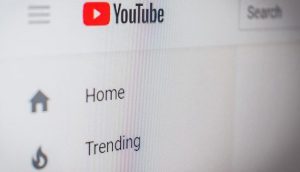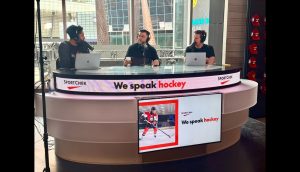There is a solution to ad-blocking, says Addictive Mobility COO Andrew Opala, and it isn’t to introduce paid subscription programs for an ad-free experience: it’s to make better ads.
Most of the attendees at FFWD Ad Week probably wish it were that simple — and for his part, Opala admitted that dislike of ads is a complicated issue with a storied history. In his talk, Opala outlined the often contentious relationship audiences have had with advertising, and what motivated people to use ad-blockers.
Citing research from IAB Canada, Opala noted that 17% of Canadians has an ad-blocker installed. And, he added, with Hong Kong billionaire Li Ka-shing investing in the ad-blocking platform Three in 2015, he doesn’t expect the use to curb anytime soon. “He makes money by making good business decisions,” said Opala. “If [Ka-shing] thinks blocking ads can make money, I would be worried.”
A study by Adobe and PageFair (pictured) estimated that globally, blocking software cost the ad industry $41 billion in 2016 — up from just over $7 billion in 2013.
So why does Opala think people use ad-blockers?
Since the 1920s, he said, a mistrust over ads making outrageous claims and annoyance from too much of the same message has been a recurring theme, from the days of radio to television and, eventually, online. Following the Radio Act of 1927, Opala said there was a large push to “get rid of ads entirely because they were being abused,” with respect to exaggerated claims and manipulative tactics. However, a 1935 survey by advertiser Lux Soap that asked people if they would be willing to pay a small price for ad-free radio. The answer for about 75% of respondents was a hard “no.”
“‘We hate advertising, but radio is essentially free,'” was the majority of the response, according to Opala.
It’s an attitude that has persevered into the 21st century: According to the IAB’s research, 78% of Canadians would rather consume free, ad-supported content than pay for ad-free content.
Opala said perhaps it’s because of the vast number of ad-blockers available that paying to opt-out of ads isn’t that popular. Services such as Hulu and YouTube have added ad-free tiers for paying (or higher-paying) subscribers in recent years, but the jury is still out on the success of many of these “freemium” models. There’s no telling if or when YouTube Red will launch in Canada, and Google has not yet made public the number of subscribers, but TheVerge reported the global total is around 1.5 million, a small fraction of YouTube’s one billion worldwide users.
So can advertisers and audiences ever have a better relationship? Opala said it’s possible, but there are some lessons to be learned. For one thing, he said, ads such as pre-roll and mid-roll need to be be less interruptive and treated more as a break.
To demonstrate this, in the middle of his presentation, two of Opala’s colleagues at Addictive walked on the stage — repeatedly — holding a banner, walking in front of him while he was speaking.
“If you’re reading a chapter in a book, you finish the chapter, you get up, have a snack and then you go back to reading your book, that’s a good interruption,” he said. “When someone does something for 15 hours in a row, that’s considered a disorder.”
In the programmatic industry where execs have a wealth of data, Opala said it should be easy to tell when someone is ready for a “break” versus an interruption. “You need to figure out those moments when your brand or your product is better than what the person is doing.”
He also said that advertisers need to learn how to back off from aggressive re-targeting, noting that the same ad following people around the web can have negative consequences.
Last year, he said, Addictive tested a campaign that had a single creative deployed over six weeks. In the first week, the engagement rate was 1.1%, but by the sixth week fell to 0.9%, with audiences having a sense of “wear-out.”
Addictive also tested the same campaign but with three different pieces of creative that followed a story, with the spot changing every two weeks. In that case, engagement rose from 1.9% in the first week to 5% in the sixth week.
He also said advertisers need to take into account how much traffic is on mobile and adjust their creative — as well as the destination — accordingly.
“If you’re reaching people on a mobile device and it takes people through to a mobile page with tiny little links, tiny little buttons, that’s a terribly executed ad.”
The creative itself also needs to be mindful of the mobile experience — according to a recent study by Kantar Millward Brown, 45% of Gen Z Canadians say they try to avoid mobile ads because they slow down their devices, as do 58% of Gen Y and 56% of Gen X.
According to Addictive’s testing, Opala said ads that were around 850 kilobytes in size were considered 12% accessible, while those which were 200 kilobytes were deemed 44% accessible.
He reiterated that audiences’ preference for free content over paid, ad-free content offers some hope for the ad industry — but he’s not entirely optimistic just yet.
“Ad-blocking is continuously growing,” he said. “And if Li Ka-shing thinks advertising is going to get a lot worse, if you have people putting money into companies that are breaking you, I think we should assume it’s going to get worse. It’s getting worse because we’re not doing a good job.”
























